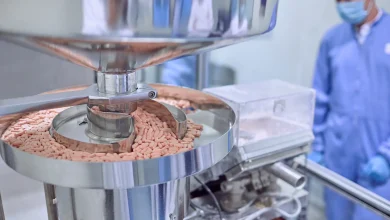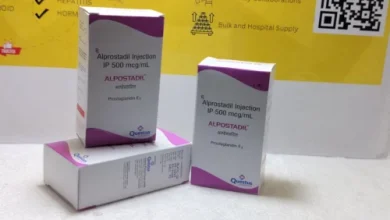How to Heal a Toe Infection Caused by Ingrown Nails?
How to Heal a Toe Infection Caused by Ingrown Nails?

Ingrown toenails are a frequent painful burden, which may further give rise to infection if not treated. When there is an ingrowth of an edge of the toenail into the skin surrounding it, it may be accompanied by discomfort, swelling, and redness. Such a problem is further complicated when infection begins: pus occurs, the pain amplifies, and fever develops in some instances. Fortunately, toe infections resulting from the condition are effectively treatable, and many of them can be healed without surgery or invasive procedures. The following blog looks into the best ways of healing a toe infection, preventing the infection from worsening, and keeping your feet healthy and pain-free.
What Causes Ingrown Toenails and Associated Infections?
The most common causes of the ingrown toenails are improper cutting of the nail, tight-fitting shoes, or trauma to the toe. Genetics sometimes can be the culprit because some people tend to have ingrown nails more than others do. When the toenail cuts through the skin, an open wound is created and allows bacteria to enter and cause an infection. Signs of an infected toenail would include redness, swelling, pain, and pus being able to be seen.
What seems to be a minor infection may lead to serious complications if left unaddressed, which also includes the spread of the infection down to the bone. It is, therefore, necessary to detect these symptoms at the right time so that all possible steps can be followed to recover from the infection correctly.
How to Cure a Toe Infection-Step-by-Step Guides
1. Soak Your Foot in Warm Salt Water
One of the first things you can do that will begin to take some of the pain away and lessen the infection is soaking your foot in warm water. Adding Epsom salts to the water will go a long way in soothing inflammation, drawing out pus, and softening the skin around the nail. How to Do It:
Fill a basin with warm water and add a handful of Epsom salts.
Soak your foot for 15-20 minutes, two to three times a day.
Dry the foot completely, especially between the toes after soaking.
The warm salty water cleans up the area and helps in the healing process sooner.
2. Keep the Toe Clean and Dry
The infected toe requires that cleanliness be kept in perspective. After soaking, the area around the infected nail needs to be cleaned using mild soap and water. Be gentle; do not scrub, as this could further irritate the infection. Clean and pat dry with a clean towel to avoid moisture that could encourage bacteria to flourish.
Change socks more often and use breathable shoes that will not put pressure on the toe. Keeping the toe dry is very crucial in preventing the worsening of an infection.
3. Apply Antibacterial Ointment
Once clean and dry, apply over-the-counter antibacterial ointment to the infected area. Ointments such as Neosporin or something similar will aid in the eradication of bacteria and make it much more difficult for the infection to get worse. Cover the toe with a clean bandage to protect it against dirt and further irritation.
Change the bandage and apply ointment at least once daily, but more so whenever it gets wet or dirty.
4. Take Pain Relievers if Necessary
Ingrown toenail infection can be painful, especially if the toe swells up and becomes inflamed. Over-the-counter pain relievers can help to control that pain and, at the same time, lessen the swelling of the toe.
Follow the dosage on the label, and if after trying to treat it, the pain persists, then that might be a sign that the infection needs professional medical assistance.
5. Apply a Toe Protector or Cotton Wedge
A protector on the toe or a small piece of cotton inserted under the corner of the nail serves to take the pressure off the infected area so the nail can grow in properly. In this way, you will cantilever your nail off the skin to grow out normally.
Here’s how to apply the cotton:
Following soaking of the foot, take a pair of clean tweezers and gently pull the edge of the ingrown toenail back.
Place a small piece of clean cotton or dental floss underneath the edge of your nail.
Replace the cotton or floss daily, particularly after soaking the foot.
For pain alleviation, to avoid the digging of the nail further into the skin, one should consider toe protection with cotton wedges.
6. See a Doctor if Infection Continues
If in a few days you find that your infection in the toe isn’t getting better with home care, or if the symptoms worsen, such as heavier pain, spreading redness, or even a fever, you should see a doctor. A doctor will generally prescribe oral antibiotics to treat an infection or other recommendations if the infection has gotten out of hand.
Most of the time, this involves a minor procedure from the doctor to either partially remove the nail or drain the infection. These are typically very quick procedures that are quite effective in relieving symptoms and allowing proper healing of the nail.
Prevention of Future Ingrown Toenails and Infections
While knowing how to heal a toe infection is important, prevention is even better. By taking just a few simple precautions, you will be well on your way to reducing the possibility of ingrown toenails setting in during the future. For instance, you can trim your toenails properly to minimize the chances of infection. Always cut your toenails straight across; do not allow the edges to be rounded, as this invites the nail to grow into the skin. Similarly, avoid cutting the nails too short because this may also cause an ingrown toenail.
Wear comfortable shoes: Avoid putting on shoes which are too small or narrow, as it can put pressure on the toes, thereby leading to ingrown nails. Use shoes that have a wide toe box to accommodate your toes comfortably.
Keep your feet clean: Washing your feet regularly and keeping them dry will prevent infection. Dry your toes after bathing to avoid excess moisture.
Don’t Hurt Your Toes: Sports and games might be enjoyable, but one should be prepared to prevent trauma to the toes. Wearing of protective shoes in such situations may reduce further risks of an injury.
Check Your Feet: Especially people suffering from diabetes or any condition that reduces circulation, one should check one’s feet for ingrown toenails, cuts, and infections.
Conclusion
While painful to deal with, knowing how to quickly heal a toe infection will save one from further complications. Commonly, most infections from ingrown nails can be treated within a couple of days from the comfort of one’s home with proper care and treatment. If the infection does not get better or worsens, seek the help of a healthcare professional.
Follow these steps and take some precautionary measures to keep your feet healthy, pain-free, and infection-free.




